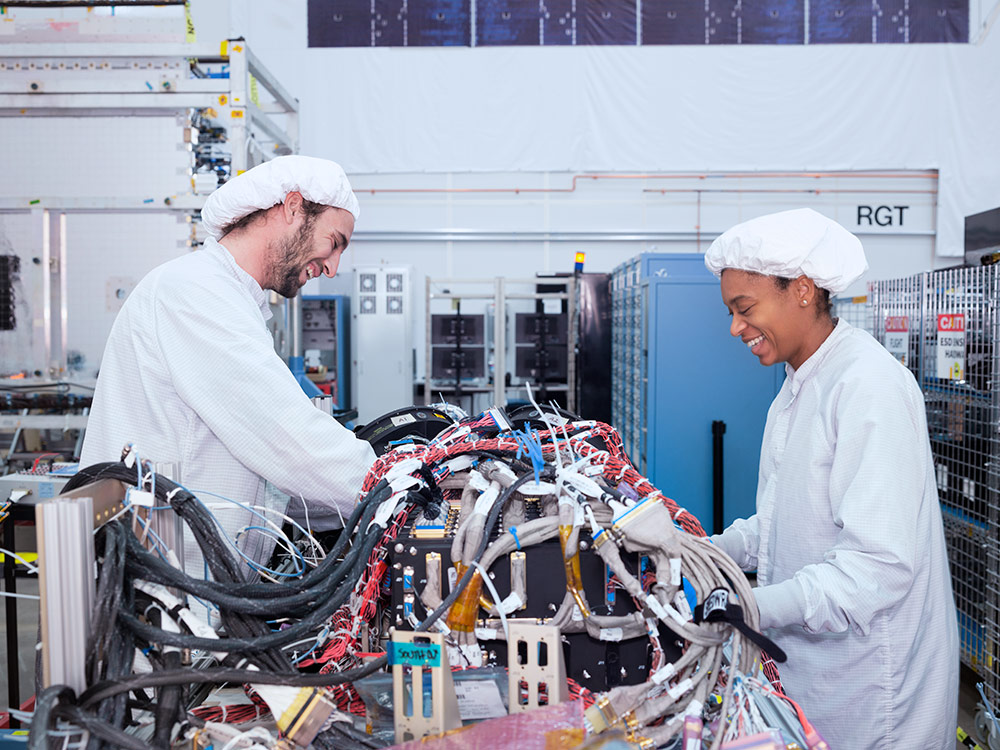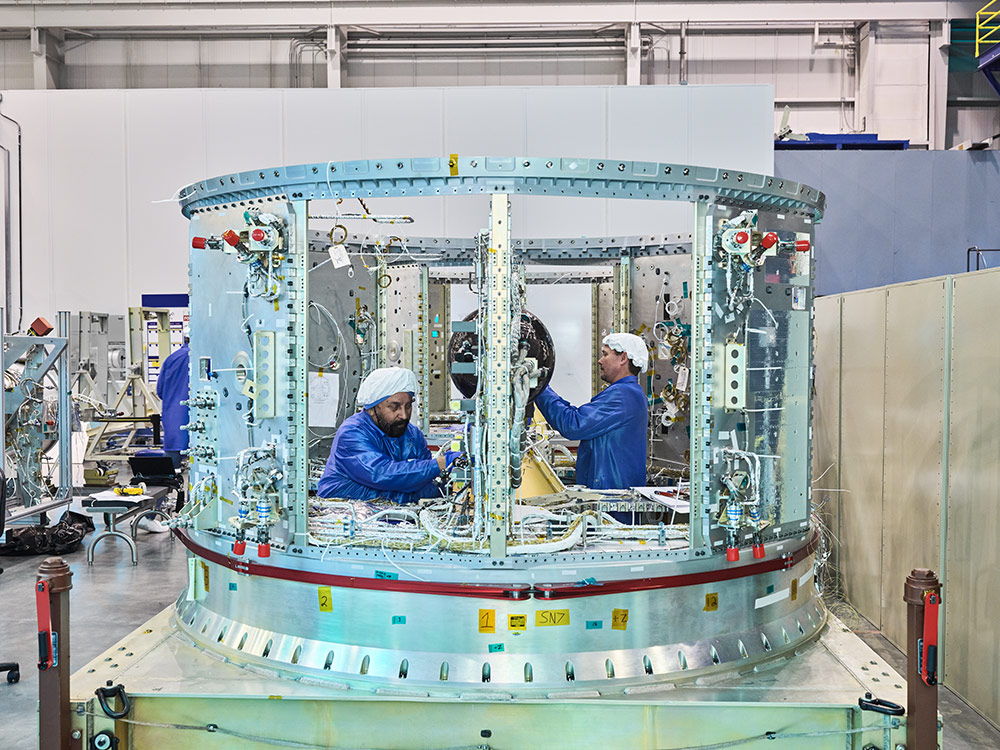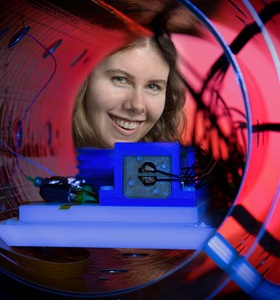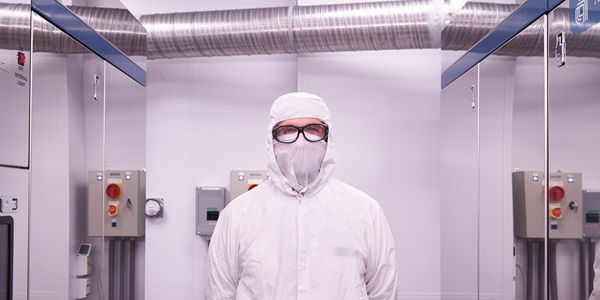How We're Building the Future of Work at Northrop Grumman
Defining Possible by Focusing on Key Initiatives

By Kelly McSweeney
Employees everywhere are faced with the challenges of implementing new processes while attempting to work more efficiently. As Northrop Grumman embraces the latest technologies, transformational efforts across the company are underway to support and develop its 95,000 employees as the company builds the future of work.

Expanding Diversity, Equity and Inclusion
“Diversity, Equity and Inclusion (DE&I) is a foundational value to how we work,” says Peter Brooks, Vice President of Talent Acquisition for Northrop Grumman. “Expanding the aperture and including more people in the labor market is something that is ethically the right posture to take with regards to how we operate in our communities, but it's also how we expand the available talent pool.”
The company has diverse leadership, recruiting partnerships with historically black colleges and universities (HBCUs) and minority serving institutions, and several programs dedicated to women in science, technology, engineering and mathematics (STEM). Inclusion has taken on an even deeper meaning during the pandemic, as lines between professional and personal became blurred.
“A phenomenon occurred with the pandemic, where women were disproportionately impacted. In America, three million women left the workforce. And not only that, but if you look at the intersectionality of those women, women of color left the workforce at an even greater proportion than white women did,” Brooks says. “We need a plan to support women in the workforce and their return to work, if they choose to. This is going to be a critical element of how we proceed from a labor perspective.”
One way Northrop Grumman is supporting its employees is through an offering called iReturn for people who have taken a break from their career. Described as a “returnship,” the program places employees in a 12-week program to prepare for a full-time career in one of several fields and includes training, mentoring and networking.

Designing Multiple Pathways to Employment
Another way Northrop Grumman is addressing the new workplace is through skills-based hiring. Traditionally, job requirements have typically been predicated on a formal degree or certification. But the future of work will consider multiple pathways to employment.
“There are many people who develop skills on the job, in military service or other environments, that are conducive to skills we need,” Brooks says. “We have to be able to leverage bringing those people into the workforce in a much more inclusive and open way than what has historically been the case across corporate America.”
Programs such as the Business Roundtable, OneTen and various apprenticeship programs aim to create a new talent acquisition paradigm that emphasizes people's skills — not just the things that would traditionally appear on their resume.
“The purpose of our apprenticeship programs is to re-skill high-potential talent in the labor market that may not have the requisite background companies generally look for,” says Brooks. He adds that the program “equips them very quickly to build those skill sets to get some hands-on experience and allows them to enter the workforce in a meaningful way.”
Previously, job descriptions included a list of all the hard skills required for a job – for example, a certain degree or years of experience in a particular skill. Now, greater emphasis is placed on an individual’s skill level as it relates to the job, plus softer skills such as the ability to collaborate on a team and demonstrate active learning. This helps to widen the aperture to find and source critical talent.
“We want to write requirements that capture the key skills required on day one and understand holistically what the candidate is potentially bringing to the table,” says Brooks.
Instead of looking for a candidate who looks perfect on paper, the future of work will help to find the candidate with the required qualifications and then trains them for additional skills on the job.

Focusing on Employee Development
To keep up with the ever-changing workplace, employees are constantly learning and evolving through quick online learning, such as webinars or digital courses. There are also formal certifications and support for traditional education, such as tuition assistance programs.
For example, Mentoring Tech Professionals is a new program for technical development for current employees. Additionally, Future Technical Leaders (FTL) is a talent development program for STEM graduate students. Both current employees and external candidates are considered for this innovative program.
“We are always looking for the best technology talent and FTL helps us recognize their potential on an accelerated basis,” Brooks explains.

Defining the Purpose of Work
One aspect of the future of work that is hard to quantify is a heightened awareness of the purpose of work. Over the last two years, amid the pandemic and growing social unrest, many people began reconsidering the deeper meaning behind every aspect of their lives — and that includes work.
“The nature of our work tends to draw people to our company who are looking for intentional, purposeful, meaningful work,” says Brooks. “At our core, we’re a technology company focused on global security and human discovery."
More Innovation Stories
Read all stories about advanced technology and innovation >>


